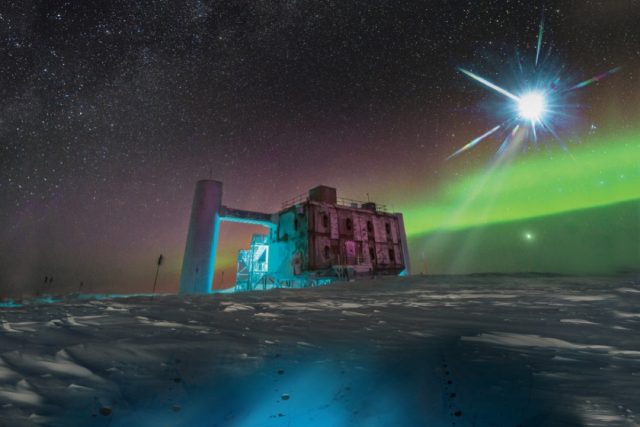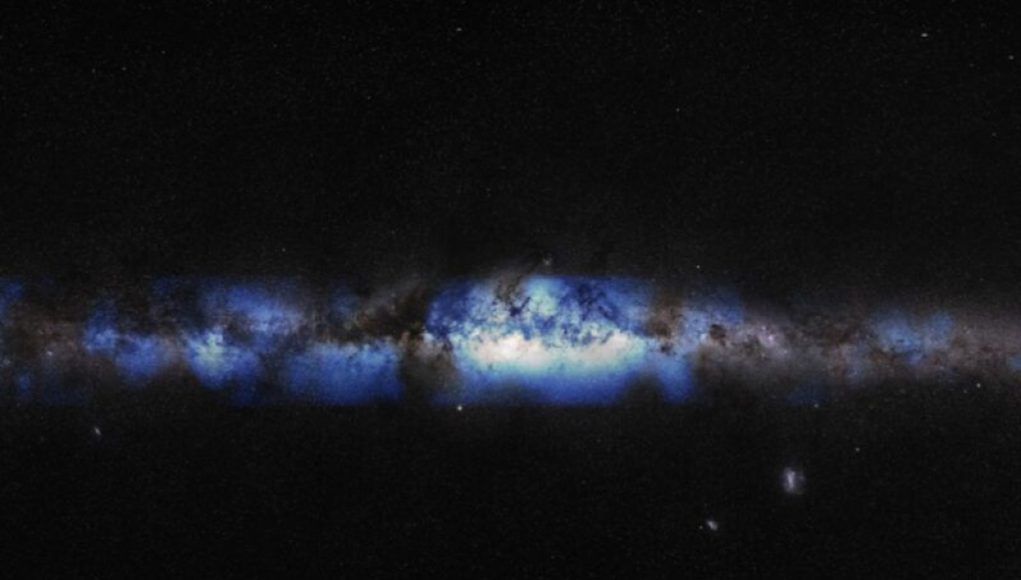Prepare to be amazed! Scientists at the IceCube Neutrino Observatory have just unveiled a breathtaking new image of our very own Milky Way galaxy. But here’s the twist: this image was captured not with light, but with ghost-like messenger particles called neutrinos. This groundbreaking analysis, announced at a Drexel University event today and set to be published in the journal Science tomorrow, provides the strongest evidence yet that the Milky Way is a source of high-energy neutrinos. And in doing so, it sheds more light on the mysterious origin of high-energy cosmic rays.
“I’ll never forget the moment when we realized that we were the first humans to see our galaxy in a completely new way,” said Naoko Kurahashi Neilson, a physicist at Drexel University and member of the IceCube team. “Observing our own galaxy using particles instead of light is a monumental leap forward. As neutrino astronomy continues to evolve, we will gain a whole new perspective on the universe.”
For decades, scientists have been puzzled by the origins of cosmic rays—powerful clusters of protons and neutrons that rain down on Earth’s atmosphere. French physicist Pierre Auger first proposed in 1939 that cosmic rays carry immense amounts of energy, but identifying their sources has proven to be a challenge. One method involves tracing the paths of high-energy cosmic neutrinos back to their origins. These neutrinos are created when cosmic rays collide with matter or radiation, producing particles that eventually decay into neutrinos and gamma rays.
Most neutrino experiments are conducted deep underground to minimize interference from other sources. In the case of IceCube, the collaboration has deployed arrays of optical sensors, each about the size of a basketball, deep within the Antarctic ice. When a neutrino interacts with an atom in the ice, it produces charged particles that emit UV and blue photons, which are then detected by the sensors. This unique setup positions IceCube to greatly enhance our understanding of the origins of high-energy cosmic rays.
Advertisement
One of the leading candidates for the source of high-energy cosmic rays is active galactic nuclei (AGNs), which are found at the centers of certain galaxies. These AGNs derive their energy from supermassive black holes at the galaxy’s core and/or from the black hole’s rotation. However, pinpointing high-energy neutrino sources in space is no easy task, given the abundance of background neutrinos and other particles in Earth’s atmosphere. For every neutrino detected, IceCube records approximately 100 million muons. In 2018, IceCube detected a flare of neutrinos that appeared to originate from a type of AGN known as a blazar. However, to validate this observation and reconcile it with existing neutrino models, scientists needed to find other similar cosmic neutrino sources.

In 2020, the IceCube collaboration analyzed data collected between 2008 and 2018. They discovered a tantalizing hint of 63 excess neutrinos coming from the direction of four AGNs, although only one—Messier 77, also known as NGC 1068 or the Squid Galaxy—reached statistical significance. However, with a significance of just 2.9 sigma, it fell short of the threshold required to claim a definitive discovery. It could have simply been a random fluctuation in the background.
Undeterred, the IceCube scientists revisited the data last year, employing machine-learning techniques to improve the reconstruction of photon trajectories and energies detected by the sensors. They reprocessed the same 10 years of data and the result was astounding: an excess of 79 neutrinos above the background, with a statistical significance of 4.2 sigma. This firmly establishes Messier 77 as a strong contender for a high-energy neutrino emitter.
With emerging advancements in telescope technology, astronomers have been able to unlock the mysteries of our distant universe, yet there still remains hidden realms of knowledge inaccessible by traditional methods. Enter the exotically charged subatomic particle called neutrino. Recently, scientists have utilized neutrinos as windows to understand the unique structure of our very own galaxy.
Neutrinos are weakly interacting particles generated by nuclear reactions in stars, supernovae, excreted by active galactic nuclei, and even coming from the moon and sun! These neutral particles fly through galaxies, passing through planets, stars and even human bodies.
Using a neutrino observatory located in the Antarctic ice, the IceCube detector, specialized instruments detected neutrinos from the outer edges of the Milky Way, providing an unprecedented view of the cosmic web in our galaxy. Research teams compared the neutrino signals from the galaxy’s star formation regions with measurements of X-ray emissions from that same region.
The results show that the Milky Way is a web of interconnecting clouds of gas and dust that give off radiation as they condense, heat up and collide with each other. This radiation is what powers star and nebula formation in the Milky Way.
What this means is that neutrinos can be used to measure the pressure in these regions and other crucial parameters such as density and temperature. This is critical to understand the nature of these star forming regions.
Through the eyes of neutrinos, scientists are able to observe the Milky Way, unveiling its intricate structure in a unique and unprecedented way. While it is still early to draw conclusions, the discovery of the Milky Way’s structure through the use of neutrinos opens possibilities for exploring and understanding our galaxy better.
Ultimately, this newfound knowledge about the structure of our galaxy may help uncover the immense and fascinating history of this vast universe in which we are all part of.



















